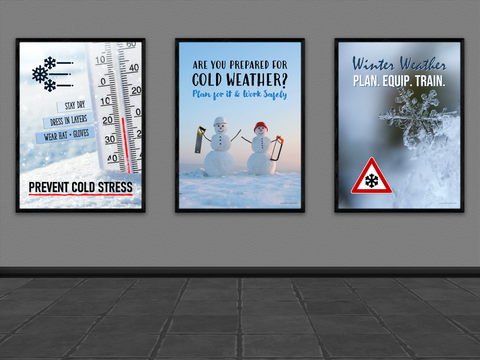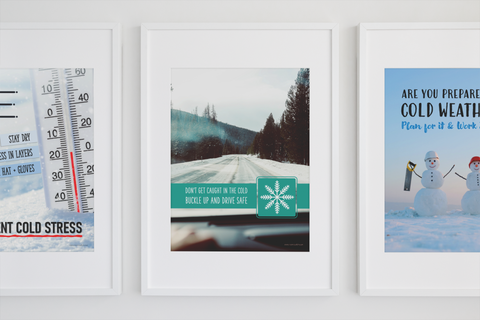Winter's icy grasp is often picturesque, with snow-covered landscapes and frosted trees. However, the colder months aren't just about sipping hot cocoa by the fireplace and making snow angels. For many workers, especially those in outdoor industries, winter presents unique challenges. The plummeting temperatures can lead to a silent yet perilous condition known as cold stress. As the temperature drops, it becomes imperative for workplaces, particularly those exposed to the elements, to ensure that safety remains a paramount concern.
Cold stress, while sounding somewhat scientific and detached, can have dire consequences if not addressed. It occurs when the body can no longer maintain its standard internal temperature. This drop can lead to cold-induced illnesses and injuries such as: frostbite, trench foot, and even hypothermia. Given that many of these conditions can have life-altering or even fatal outcomes, understanding the risks associated with cold environments is crucial.
- Hypothermia: Shivering, confusion, fatigue, loss of coordination, and slurred speech.
- Frostbite: Numbness, tingling, stinging, aching, and pale or waxy skin.
- Trench Foot: Swelling, redness, numbness, and blisters.
Visual aids, particularly in the form of posters, have always been great tools for disseminating information in a concise yet impactful manner. Cold stress safety posters are no exception. These posters not only serve as constant reminders for workers but can be instrumental in educating them about potential dangers of cold stress, its symptoms, and the preventive measures that can be taken. Here are a few tips every worker can implement into their work routine to stay warm:
- Dress In Layers:
- Inner layer: Wear moisture-wicking fabric close to the skin to remove sweat. Wet clothing can increase the loss of body heat.
- Middle layer: Insulating materials, like wool or synthetic fleece, help trap warm air close to the body.
- Outer layer: Choose windproof and waterproof garments to protect against wind, rain, and snow.
- Stay Hydrated and Nourished: Cold weather can suppress thirst, but your body still needs hydration. Drink hot beverages like herbal tea to stay hydrated and warm. Eating calorie-rich foods will give your body the energy it needs to produce heat.
- Stay Dry: Wet clothing and boots can drastically increase the risk of cold stress. Keep an extra set of clothes on hand in case you get wet.
- Limit Exposure: On particularly cold days, try to reduce the number of tasks performed outdoors. Do the outdoor jobs in the middle of the day when it’s warmest out. Rotate workers, so no one is exposed to the cold for extended periods.
For employers and workplace safety managers, investing in cold stress safety posters is not merely a nod to compliance. It's a genuine step towards ensuring worker safety. It is a testament to the organization's commitment to the well-being of its people. It’s vital to understand that safety is not just about avoiding accidents. It's also about creating an environment where workers feel informed, equipped, and valued. These posters can act as the first line of defense against the icy clutches of cold-induced ailments.
One of the primary defenses against cold stress is appropriate clothing. Workers should be educated on the significance of layering clothing, using water-resistant attire, and the importance of keeping dry. Moisture and dampness can exacerbate the effects of cold temperatures. It's crucial that workers understand the risks of wet clothing and the importance of staying dry. These posters can remind them of those life-saving tips.
Remember, it's not just about the ambient temperature; wind speed, humidity, and your activity level all play a crucial role in how the body responds to cold conditions.
Winter, in all its frosty glory, is not just a season; it's a reminder of nature's prowess. While we marvel at its beauty, it's also our responsibility to respect its potential hazards. Let's pledge to stay warm, stay safe, and ensure that every worker returns home in the same health they arrived in. Cold stress is a genuine concern, especially in workplaces exposed to low temperatures. Awareness, education, and preparation are key to ensuring everyone remains safe and warm.
Incorporating these five essential cold stress safety posters in strategic locations throughout the workspace will not only promote best practices but will also serve as constant reminders for workers to prioritize their safety. Remember, it's always better to be proactive than reactive when it comes to the well-being of the workforce.









